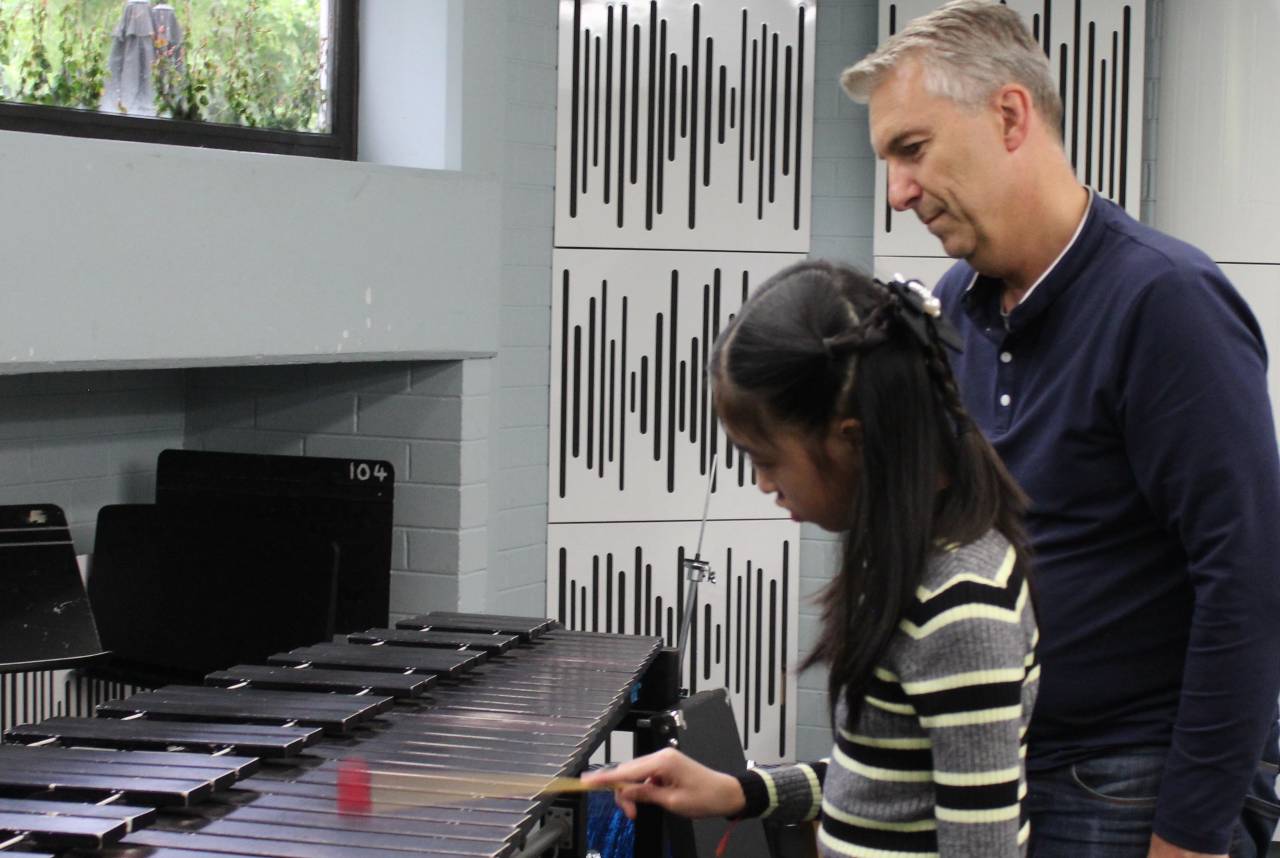Bridging the gap: Creating a future in music for children with disabilities

A University of Melbourne research program run in conjunction with Melbourne Youth Orchestras, the Adaptive Music Bridging Program, is proudly preparing the first cohort of students to take to the stage for their debut performance.
Led by researcher Dr Anthea Skinner, the program supports children with a disability to use adaptive musical instruments to develop their musical knowledge and skills, preparing them for futures in mainstream music programs and ensembles.
The program launched in February 2023, with eight students ranging from 8 to 14 years old. The group meet every Saturday for band practice with the support of music teachers, engineers and therapists.
As an ethnomusicologist who also lives with disability, Anthea has experienced firsthand the barriers disability can create for students who could otherwise become musicians. Participating in music requires accessible and appropriate instruments, often expensive technology, and the right support and coaching.
“Growing up, my parents taught me music and I became a musician at a young age,” said Anthea. “However, I quickly noticed I was the only disabled kid in our school band and I knew that other kids like me were missing out.”
Through her work with Professor Kat McFerran and Associate Professor Grace Thompson from the Faculty of Fine Arts and Music’s Music Therapy Department, the team noticed some common themes reported by musicians with a disability when speaking about their education and pathways into professional success.
“We found that the main barriers we kept coming back to were music education and accessing teachers.
“And successful musicians don’t pick up their instrument for the first time when they’re hitting university, they need to pick it up right at the beginning, when children are thinking about whether or not they can play an instrument,” she said.
It was this insight that led Anthea, along with Dr Leon de Bruin from the Performance Teaching Department, to form the Adaptive Music Bridging Program. Anthea formed a team, including Melbourne Youth Orchestra (MYO) students, past and present University of Melbourne students and staff from a range of faculties, all driven by a collective passion for the project and the outcomes for the students.
Together they have worked tirelessly to provide the children with the right foundations and tools to allow their natural skills to flourish.
The program provides a space for students and their families to experiment with various instruments, and find the one that both feels right and aligns with their interests. Students receive weekly group lessons with high-quality music instruction. They learn how to play their instrument, music literacy and performance etiquette, with the view to preparing these young musicians for a future in mainstream music.
Student Tiana played the violin when she acquired her disability.
“When Tiana had her stroke last year, she completely lost movement in her left side,” said Tiana’s father, Vincent. “We were worried that she would have to give up on her wish to play violin and piano with both hands again.
“When we read about the program, it gave us hope that she might be able to get the help she needed, and be able to continue to follow her dreams.”
As part of the program, Tiana has resumed playing her violin, which has been adapted with reversed strings that enable her to use her right hand for fingering. She has also been able to use her left hand when playing piano, through which she has regained the confidence to perform in front of an audience.
“The program has made a huge difference to Tiana's life, it has helped us realise that any challenges that she may face can be overcome with perseverance and the right support,” Vincent said.
In December, Tiana, alongside two of her peers from the program, auditioned to join MYO’s mainstream ensemble program, an opportunity that just a year ago seemed unattainable. This December the students in the program also made their first public performance alongside professional performers with disability.
“I love music as it has always been a part of my life,” said Tiana. “I wanted to start playing my instruments again and I want to inspire other kids with disabilities to not give up on their dreams – just keep going,” she said.
The Adaptive Music Bridging Program team is currently working through the waitlist to welcome new students to the program for 2024. Meanwhile, Anthea is applying for grant funding that will allow her to develop materials for music teachers around the country, giving them the tools and skills required to include students with disability in everyday music classes.
“Music teachers usually want to be inclusive, but they don’t have the resources to know how to adapt instruments, how to provide adaptive instruction – we want to support them to include students whose needs differ,” Anthea said.
“Supporting teachers and continue to open up the musical world for more children, enabling them to study music from a young age like any other musician.”
In relation to her motivation in pursuing this work, Anthea said, “I was lucky; I got to have an amazing music education. Now I’m passing on the skills and providing that opportunity for others.”
Dr Anthea Skinner is a musicologist with a lived experience of disability. Inspired by her own experiences growing up, Dr Skinner has launched the Adaptive Music Bridging Program with Melbourne Youth Orchestras to help others with disability access music education and learn a musical instrument.